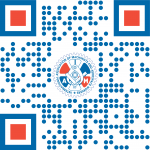In response to the pandemic, the federal government put in place legislation allowing for several emergency response programs. Along with this legislation, temporary changes were also made to EI.
This legislation is set to expire as of Sept.25, 2021, ending several programs, and extending others.
Below is a summary of the impact of ending legislation on CEWS, and the extension of temporary changes to EI to September 26, 2022.
Please be aware that the proposed extensions and changes are subject to Royal Assent, and have not yet taken effect.
The EI Program:
- 420-hour eligibility requirement still applies for both regular and special benefits
- Sickness benefits will be extended from 15 to 26 weeks
- Benefits in cases of severance, vacation pay and other monies owed on separation have also been simplified
- The federal government has also committed to ongoing consultations regarding access to benefits for self-employed and gig workers, seasonal workers, and ways to improve the Premium Reduction Program
From CEWS to the Canada Recovery Hiring Program
CEWS is set to expire as of June of 2021, however, given the continued need for the program, the federal government has extended CEWS to Sept.25, 2021. Employers will be transitioned into a new program, the Canada Recovery Hiring Program, which will run from July to November of 2021.
Employers who apply for the CRHP, or are transitioned from CEWS to the new program, can expect a gradual decline in benefits up until November, when the program ends. Eligible employers may receive a subsidy of up to 50% of remuneration paid to employees between June 6th and Nov.20th, 2021.
Once CEWS expires, employers will need to demonstrate their eligibility by proving a decline in revenue by 10%.
For the period between June 6-July 3: Employers need to demonstrate a revenue reduction of more than 0%.
For the period between July 4-Nov.20: Employers need to demonstrate at least a 10% reduction of revenue.
- Employee Eligibility:
The same rules apply to the new program as they did for CEWS.
- Worker Eligibility:
Furloughed employees are not eligible to receive benefits through their employer. Any worker on leave with pay, with the exception of vacation, sick leave or a sabbatical, are not eligible.
- Eligible Remuneration:
Salary, wages, and other remuneration for which employers are required to withhold or deduct amounts with respect to a worker’s income tax obligations, is considered eligible remuneration.
———————-
This article was originally posted on the IAM Canada website. View the original post here: Changes to EI and the Canadian Emergency Wage Subsidy


